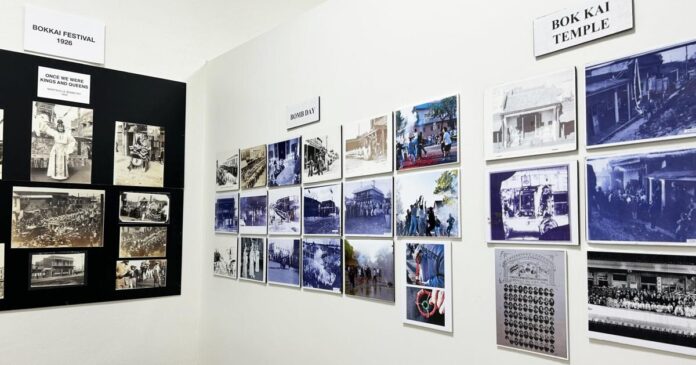Downtown Marysville is long known for its once vibrant Chinatown centered around 1st and C streets during the Gold Rush period. It was then that the Chinese established themselves in the area.
Today, there remains several artifacts and historic buildings that showcase this once successful part of the city. Over the years, there have been a handful of residents working to harness this historic past in one location.
That venue is known as the Chinese American Museum of Northern California, located at 303 1st St. in Marysville, and on Saturday it was open for the public to share and experience a piece of United States history.
The city of Marysville’s role in this history was just one part of the day as a total of 10 representatives from forgotten Chinatowns in Auburn, Hanford, Fiddletown, Folsom, Locke, Mendocino, Red Bluff, Sacramento, San Jose and Stockton had pieces of history on display in the museum for those to witness first-hand.
Elizabeth Wong, a representative from Auburn, brought in a piece from a newspaper from 30 years ago that read in part “Chinatown was thriving.” Wong said it was a piece that fit into the theme of the event because Chinatowns are not forgotten, Wong said.
Wong has worked to make sure Auburn’s once vibrant Chinese community during the Gold Rush period remains a part of Northern California lore.
Brian Tom, the director of the Marysville museum, said it’s vital to keep this time period fresh in people’s minds.
“The purpose of the exhibition was to gather together 10 Chinatowns and have them submit. All of these pictures are from the individual Chinatowns, so we should get a much more accurate picture of what’s going on because that’s our local community,” Tom said previously. “And then they also, as part of it, each one (submitted) one page of text.”
Tom was present on Saturday introducing each speaker during the lecture portion of the day. Each Chinatown speaker then proceeded to introduce the area they are representing, followed by a quick speech of life in the area during the Gold Rush.
Elaine Zorbas was representing Fiddletown, a rural area in the Sierra Nevada foothills. Zorbas wrote a book describing life in Fiddletown during the 1800s.
She said during her presentation that at one point the Chinese made up about one-third to one-half of the population between 1855-1870 – a number that stood strong until the early 20th century when there were just about 16 Chinese left, Zorbas said.
Zorbas went on to say the immigrants typically lived together in one section speaking their native tongue during everyday life in Fiddletown.
Arianne Wing, the speaker representing Hanford of Kings County, located in the San Joaquin Valley region of the greater Central Valley, said much of today’s work in restoring its Chinatown hinges on working to bring back a part destroyed by a fire, Wing said.
Hanford’s Chinatown, which is present inside Marysville, will rise again someday much like many historic faces once burned to the ground, Wing noted.
The exhibit and presence of each of the 10 Chinatowns and representatives was made possible by a $4,950 grant from California Humanities.
The Chinese American Museum of Northern California is open the first Saturday of each month from noon to 3 p.m., according to its website.

